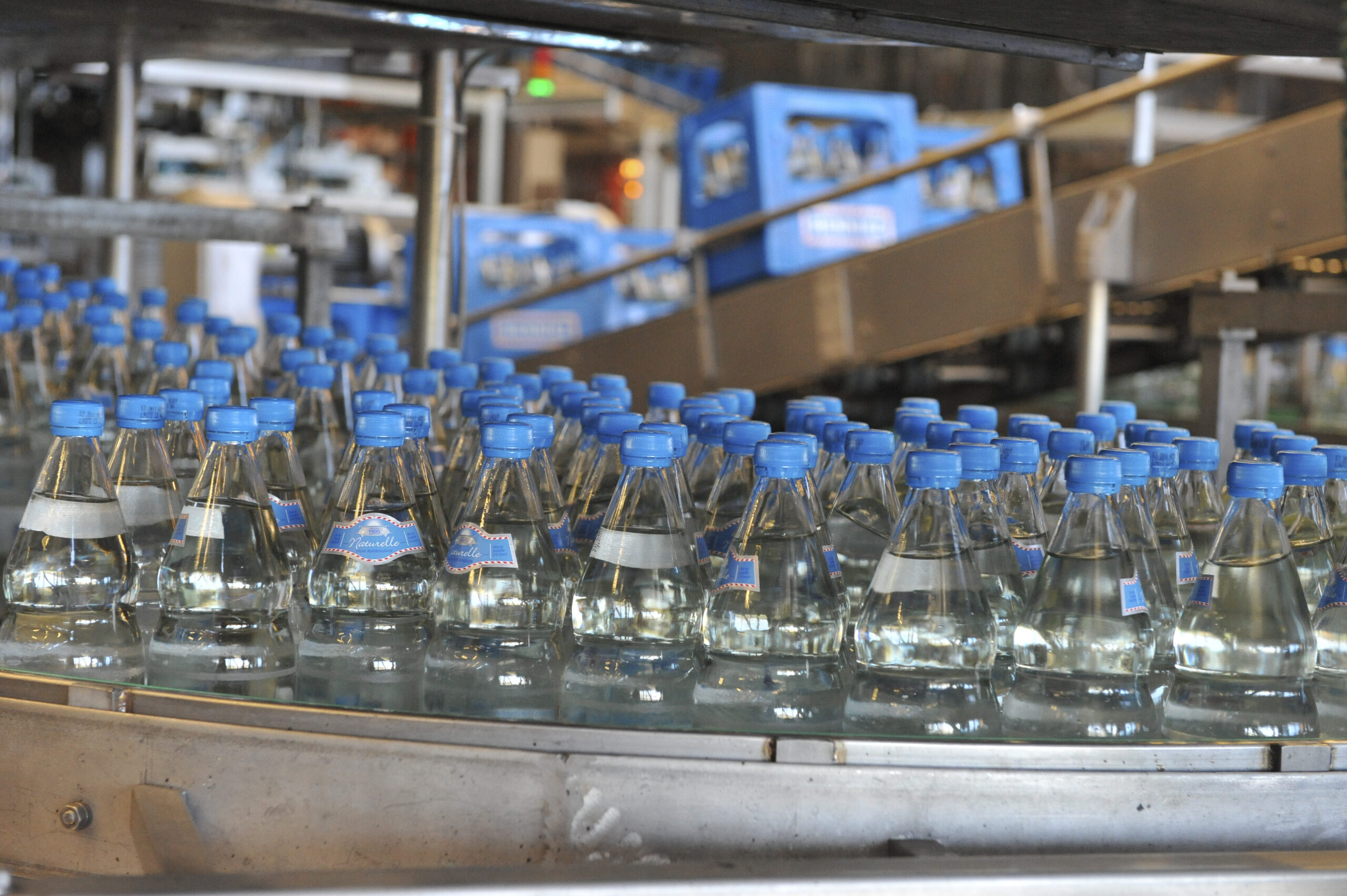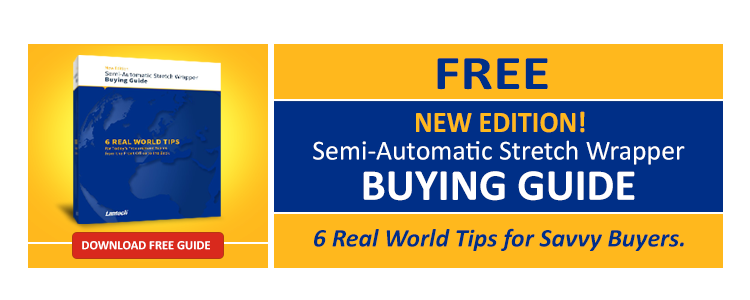How fast?
Often people buying a stretch wrapper assume that the first and most important question is, “how fast can it go?” Speed is often seen as one of the primary stretch wrapper selection criteria. Certainly there are times when speed is important. Bottled water and beverage plants, for instance, run at incredible speeds with fully automated palletization and wrapping. In such cases, speed may in fact be the determining factor in choosing the right stretch wrapper.
But those sorts of high-volume extremes are infrequent.
 Applications, which range from 10 to 100 loads per day, are more common.
Applications, which range from 10 to 100 loads per day, are more common.
What’s the objective?
When you look carefully at your process, and especially if you take a lean approach to optimizing your loading dock, you can identify certain objectives and start to optimize for them.
Typically, how fast a stretch wrapper can wrap a load is a secondary factor. For most people, labor reduction and operator safety tend to be higher level objectives. Speed, in contrast, is a byproduct of customer demand and volume.
And remarkably, speed is often misunderstood. Too frequently, people looking to buy a stretch wrapper calculate speed requirements based on daily output. Of course most loading docks have peak periods of trucks arriving, loading and departing. But the output required during peak periods is almost always much higher than when averaged across a full day.
Optimizing around the objective
Let’s take a closer look at what really matters — reducing labor cost and increasing efficiency. You may not be able to control the production rate, and you’ll certainly never control it when the trucks arrive. This means your staff is paid for eight hours of work, yet delivers most of their value in a very stressful three hours of the day. This is an inefficient use of time and labor.
A typical stretch wrapper procurement process will worsen that staffing inefficiency by calculating machine throughput requirements based on daily, rather than peak rate requirements. Once you add that inefficiency to the process, you create additional bottlenecks. (Loads waiting for a machine leads to trucks waiting for loads. This is not a perfectly balanced process.)
The solution is to shift the question of semi-automatic vs. automatic stretch wrapping from one of flat-out speed to one of optimizing processes and reducing total cost. That’s a big leap, especially when a company only wraps 30 to 50 loads per day. But a big leap simply means that it requires careful analysis. Here’s why.
Wondering what degree of automation is right for you? Start by understanding flexible options. Download our free eBook “Guide to Selecting a Semi-Automatic Stretch Wrapper“
Range of automation
There isn’t a simple black or white, automatic or semi-automatic choice. Pallet wrappers today actually offer varying degrees of automation. And modular design provides a whole range of intermediate choices.
Time and motion studies are a great place to start. When you carefully observe the process — both during quiet and at peak periods — you’ll quickly gain insight into which steps are problematic from a consistency, safety or quality point-of-view. Put those steps on a short list for closer analysis. As you grow, and volume increases, labor and safety will be the first areas where “corners are cut” and waste and/or injuries creep in.
Areas of focus
For most operations, the highest risk for injuries tend to cluster around transitions. For example, when operators move from forklifts to machines to perform certain functions, they tend to move quickly.
This may save a bit of time, but operators may skip safety steps. OSHA requires an operator to set his forklift, set the parking brake and and fasten the seatbelt. These steps are often missed if a process requires operators to get on and off a forklift frequently.
And yet those are precisely the sort of steps which are often skipped when the trailer’s waiting to be loaded at the end of the day.
Design a process with automation as the backbone
When deciding how much automation you need for your application, consider the material savings and safety features as a business process decision first, and a output requirement second.
Thinking about a new wrapper? Don’t just pick the easiest or first. Take a careful approach to the process. We’re happy to help with no obligation phone consultations. We’ll talk through your current application and suggest opportunities to optimize your process to reduce costs and increase efficiency. And we’ve got lots of free, educational resources to help as well like our free eBook, “Guide to Selecting the Right Pallet Wrapper,” which you can download here for free.
image – nestle
This post was published on March 13, 2015 and updated on March 19, 2019.
March 13, 2015

